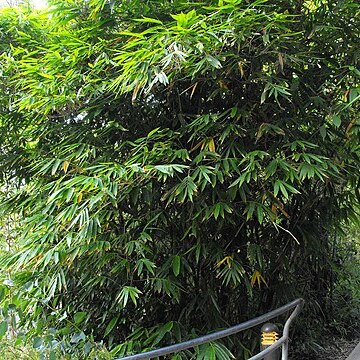A loosely tufted bamboo. The culm is erect and the tip hangs over. The stem or culm can be 30 m high. They are 15-20 cm across at the base. The wall is 2.5-4 cm thick. They are greenish-grey. The internodes are 30-60 cm long. There is a shiny brown line of hairs below and above the node. The nodes are slightly swollen. There are aerial roots in the lower nodes. There can be branches from the middle of the culm. The culm sheath is 40-60 cm long by 20-35 cm wide. It is longer than the internodes. The leaf blade is sword shaped and 20-30 cm long by 2.5-5 cm wide. It is pale green on the upper surface.

